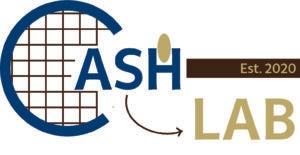The Cash lab is interested in RhoGEF signaling and regulation.
Rho guanine-nucleotide exchange factors (RhoGEFs) function to accelerate the exchange of GDP for GTP on small GTPases like Rho, Rac, and Cdc42, thus activating the GTPase. Signaling through RhoGEFs can be initiated by various inputs, such as via cytokines, growth factors, and GPCRs. Once activated, the RhoGEF will go on to activate a GTPase which can then interact with downstream effectors to regulate a variety of important cellular processes like actin organization, cell motility polarity, growth, survival, and gene transcription. Because GTPases play a key role in almost every aspect of the cell migration cycle, when they become misregulated, it often leads to diseases such as cancer. This misregulation is most frequently through mutation or upregulation of the RhoGEFs that activate the GTPases.
We are particularly interested in the Dbl family of RhoGEFs. The defining feature of this family is that all members contain a Dbl homology (DH) domain – pleckstrin homology (PH) domain tandem wherein the catalytic function of these enzyme occurs. Outside of this catalytic core, these proteins are quite diverse and usually also quite large as illustrated in the figures in this review. One of the driving questions in the Cash lab is how these diverse domains lend specificity and complexity to the regulation of these RhoGEFs.
Dr. Cash’s postdoctoral work focused on signaling and regulation of the Dbl RhoGEF P-Rex1. P-Rex1 is synergistically activated by the lipid PIP3 and the G protein β and γ subunits (Gβγ). We determined that P-Rex1 is recruited to the cell membrane, where small GTPase substrates are located, by Gβγ, and that this interaction with the membrane is also facilitated by several positively charged loops on the surface of P-Rex1. Once at the membrane, P-Rex1 can interact with PIP3, which most likely induces a conformational change in P-Rex1 that results in its activation. Binding of PIP3 to the PH domain of P-Rex1 is absolutely required for activation.
The Cash lab is continuing work on this project to further investigate P-Rex regulation. To do this, we are utilizing methods in biochemistry, biophysics, cell biology, and structural biology, including cryo-EM in particular. Additionally, we are expanding our interests to other Dbl RhoGEFs to address questions around their regulation, both from a whole molecule perspective and using a divide-and-conquer approach.
